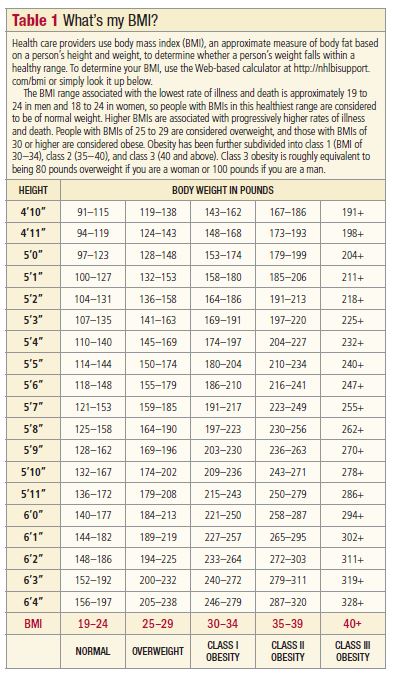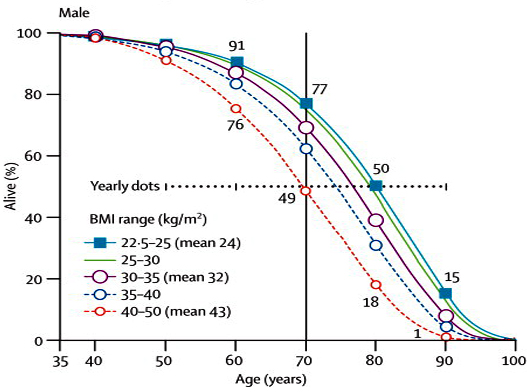
Are You Obese?
Health care providers use body mass index (BMI), an approximate measure of body fat based on a person’s height and weight, to determine whether a person’s weight falls within a healthy range.
To determine your BMI, use the Web-based calculator at http://nhlbisupport.com/bmi or simply look it up in the table below.
The BMI range associated with the lowest rate of illness and death is approximately 19 to 24 in men and 18 to 24 in women, so people with BMIs in this healthiest range are considered to be of normal weight.
Higher BMIs are associated with progressively higher rates of illness and death. People with BMIs of 25 to 29 are considered overweight, and those with BMIs of 30 or higher are considered obese. Obesity has been further subdivided into class 1 (BMI of 30–34), class 2 (35–40), and class 3 (40 and above). Class 3 obesity is roughly equivalent to being 80 pounds overweight if you are a woman or 100 pounds if you are a man.
There is a correlation between BMI and Life Expectancy
The chart below clearly shows that, for almost every age, Males with Healthy BMIs outlive Males with Unhealthy BMIs by many years.



